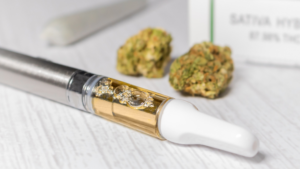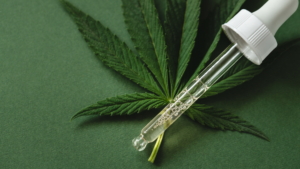Cannabis Labels: 3 Important Things You Should Know
Cannabis Labels: The Importance of Understanding Your Cannabis Packaging
As a medical marijuana patient, one of the most crucial aspects of your treatment journey is understanding the labels on your cannabis products. Your commitment to this understanding can profoundly impact your therapeutic experience.
Here at Compassionate Clinics of America, we emphasize the importance of comprehending what you’re consuming for several reasons. First and foremost, it allows you to make informed choices that align with your medical needs. By deciphering the labels, you can ensure that the cannabis products you use are tailored to your specific condition and desired effects.
Also importantly, understanding the composition of your medication helps you avoid unwanted side effects or unexpected outcomes when you’re trying to target specific symptoms.
Whether you’re seeking relief from chronic pain, anxiety, or other medical conditions, grasping the significance of cannabis labels ensures you receive the most effective and safe treatment possible.
In this article, we’ll provide you with an overview of what to look for on your cannabis labels to get the most out of the products you purchase when you get your medical cannabis card, including the strain, cannabinoid content, the terpene profiles, and other important data that your label has to offer you.
Understanding Cannabis Strain
There are potentially over 700 strains or cultivars of cannabis out there, with each having its own distinct smell, taste, potency, and effect. With that many cannabis strains out there, it’s not always easy to pinpoint what your cannabis experience can be, but there are ways to understand the components of cannabis to gain a good idea.
The information about your cannabis strain name can usually be found on the product label or on printed stickers on your jars or bags, where it’s also clearly indicated whether the strain is an indica, sativa, or hybrid.
Each of these strains offers distinct effects, making it crucial to identify the right one to address your unique medical needs:
- Indica strains often associated with a relaxing, body-centric high, making them suitable for patients dealing with chronic pain, insomnia, or anxiety.
- Sativa strains tend to promote an energetic and uplifting experience, making them a favorable choice for individuals seeking relief from depression or fatigue.
- Hybrids are a blend of both indica and sativa properties, catering to a broad spectrum of medical conditions.
As we will demonstrate below, however, the indica/sativa/hybrid classification isn’t always the biggest indicator of the effect of a cannabis strain.
Luckily for medical cannabis patients, there is generally a lot of information available on the different cannabis strains available. We recommend checking out sites like Leafly or CannaConnection to find information about the various strains available to you.
Knowing everything you can about your cannabis strain empowers you when you become a medical cannabis patient to make well-informed choices. You can select strains that align with your specific ailment and desired effects.
Knowing the Cannabinoid Content
For too long, marijuana products have been associated with THC only, the psychoactive component of cannabis. However, other cannabinoids have begun to take over center stage in recent years as the capabilities of other cannabinoids become more realized through research and patient experiences.
When you purchase a medical cannabis product with your medical cannabis card, it’s always important to understand the cannabinoid content in your product, and how much of each cannabinoid is present in the cannabis product in terms of percentage (%) or milligrams (mg).
On the cannabis label, you will typically find these cannabinoid percentages listed, often as a ratio or percentage. For instance, a product may contain 10% THC and 5% CBD. Additionally, the label may display cannabinoid content in milligrams per serving or per package. This precise measurement helps you dose accurately, especially in the case when you are consuming an edible or beverage product that is infused with cannabinoids.
Your cannabis labels may also have abbreviations for other cannabinoids like CBG (cannabigerol), CBN (cannabinol), THCV (Tetrahydrocannabivarin), THCA (Tetrahydrocannabinolic acid), THCP (Tetrahydrocannabiphorol), and CBDA (Cannabidiolic acid), just to name a few. These should also be displayed in terms of percentage and milligrams per serving/package.
Understanding these cannabinoids adds depth to your cannabis knowledge. The blog of Compassionate Clinics of America is an excellent resource to learn about cannabinoids. Start with some of the links above to expand your knowledge.
The Importance of Terpene Profile
While we have always been told that cannabinoid content, especially THC, is the most important part of the cannabis experience, terpenes could be equally — if not more — important.
Terpenes are organic compounds found in the essential oils of cannabis and other plants. They’re responsible for the distinct flavors, aromas, and even some of the effects associated with different cannabis strains. These aromatic compounds set one cannabis strain apart from another, and they can significantly influence the experience a patient has when using cannabis.
Beyond their role in flavor and aroma, cannabis terpenes are being actively studied for their potential medicinal benefits, offering promising outcomes for individuals with medical cannabis cards.

Terpenes in cannabis interact synergistically with cannabinoids and other chemical compounds in a phenomenon known as the entourage effect. The entourage effect, as described by cannabis researcher Dr. Ethan Russo, is like “2 + 2 equaling 8 in terms of benefit.” This concept suggests that terpenes, in combination with cannabinoids and other compounds in cannabis, produce a more potent effect when working together than when they act individually.
New research supports through brain wave technology that the terpenes in cannabis have a significant role to play in enhancing the psychoactive effects of THC, with THC producing different psychoactive effects alongside terpenes than it does in its isolated form. However, it’s suggested that terpenes need to be in concentrations of 0.5% or higher to have pharmacological benefit.
Understanding the interplay of terpenes and cannabinoids is crucial for medical cannabis patients seeking to maximize the therapeutic potential of their treatment.
Other Important Data on Cannabis Labels
There are other parts of the label on cannabis products that medical cannabis patients should be aware of and take into account. Understanding the importance of reading the expiry date and warning labels on the products that medical cannabis patients purchase is paramount.
Just like any other medication, medical cannabis products have a shelf life, and their efficacy can diminish over time. This is not just the case for edible or drinkable food-related products, but also for flower as well. By carefully checking the expiry date, patients can ensure that they are using a product that is still potent and capable of providing the intended relief.
Moreover, warning labels that are found on cannabis packaging offer essential guidance to patients. They provide critical information about dosage, potential side effects, and how to use the product safely. For patients with specific medical needs or those who may be new to medical cannabis, these labels serve as a valuable resource to ensure that they are using the product correctly and minimizing risks.
By taking the time to read expiry dates and warning labels on product packaging, patients can make informed decisions about their treatment and experience the maximum benefits of their medical cannabis products, ultimately enhancing their overall well-being and quality of life.
Read Your Marijuana Packaging Labels!
With over 700 strains of cannabis out there, and many different methods to consume medical cannabis, it can be difficult to choose the right product for your medical needs. At Compassionate Clinics of America, we put education at the forefront of helping people choose the right cannabis products for them, but helping them understand cannabinoid content, terpene profiles, and how to read your cannabis labels to get the most out of consuming this type of plant medicine.
We like to recommend to our patients that they keep their own records of the types of products they are trying: What is the THC content? What is the CBD content? What other cannabinoids are present? What terpenes are interacting together? How are the cannabinoids and terpenes working together to produce effect? How did I consume this product, and how much of it did I consume? What were the immediate effects of this product? How did this product make me feel within an hour of consuming it?
Taking time to write down your experiences with your various cannabis products helps you narrow down exactly what works for YOU and you only. Remember that everybody is different and every BODY is different.
We hope this article helped you understand some of the things to look for when choosing medical cannabis products when you get your medical cannabis card, and we hope it has empowered you to take control of your medicine. Please stay tuned to the Compassionate Clinics of America blog to get weekly releases of new education and information, designed to help you get the most out of getting your medical cannabis card.
Feel free to reach out to us any time to discuss your medical cannabis journey with one of our compassionate and knowledgeable physicians.


























